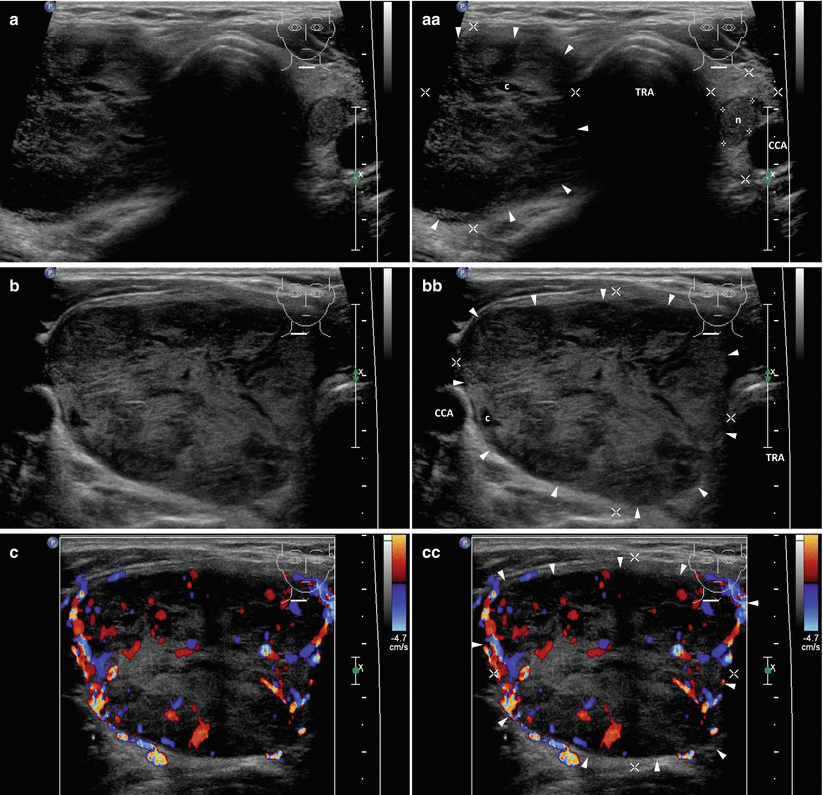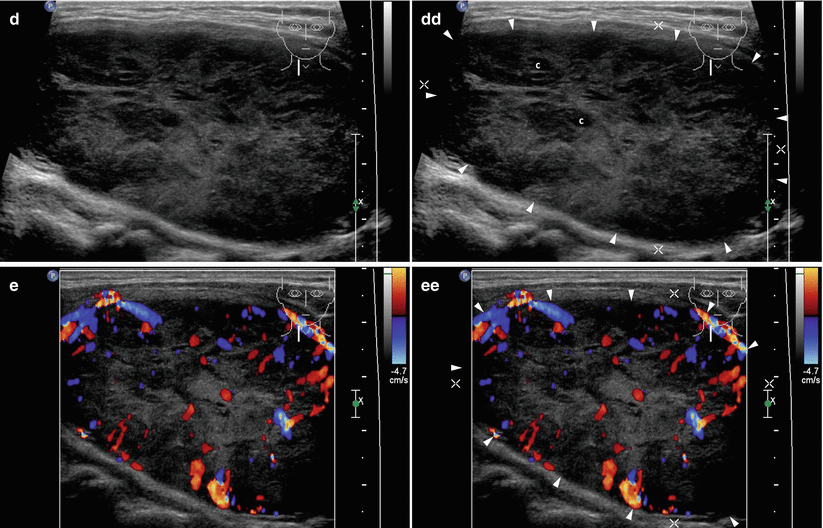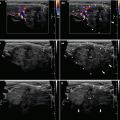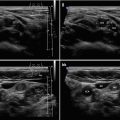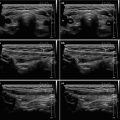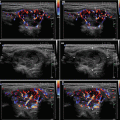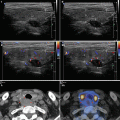and Zdeněk Fryšák1
(1)
Department of Internal Medicine III – Nephrology, Rheumatology and Endocrinology, Faculty of Medicine and Dentistry, Palacky University Olomouc and University Hospital Olomouc, Olomouc, Czech Republic
Keywords
ThyrotoxicosisToxic multinodular goiterSolitary toxic adenoma12.1 Essential Facts
Toxic adenomas are benign monoclonal thyroid tumors autonomously secreting excess of thyroid hormone. Thyrotoxicosis may develop in patients with a single autonomous thyroid nodule as the solitary toxic adenoma – STA (Fig. 12.1) or in those with multiple autonomous nodules as toxic multinodular goiter – TMNG (Fig. 12.2), also known as Plummer’s disease (first described by Henry Plummer in 1913). Nodular autonomy typically progresses gradually, leading first to subclinical, and then to overt, hyperthyroidism. Remission is rare [1].
Toxic multinodular goiter (TMNG) is found more frequently in the iodine-deficient regions and accounts for 37% of thyrotoxicosis cases in Sweden. On the other hand, the frequency is relatively low in countries with excess iodine intake, and accounts for only 6.2% of thyrotoxicosis cases in Iceland and 0.3% in Japan [2].
A Danish population-based study by Carlé et al. found the prevalence of TMNG to be 44% and STA 5.7% of all nosological types of hyperthyroidism [3].
TMNG is diagnosed by 99mTc or 123I scintigraphy, which shows diffuse inhomogeneous tracer uptake reflecting areas of hyperfunction and hypofunction within the thyroid gland [2].
Clinical findings: Ophthalmopathy and other stigmata of Graves’ disease are absent [1]. TMNG is responsible for the majority of cases of thyrotoxicosis in the elderly. There is a relative paucity of typical hyperadrenergic symptoms in older patients with hyperthyroidism, who instead may present with unexplained weight loss, neurocognitive changes, or cardiovascular effects. Of particular concern is the elevated risk of atrial fibrillation [4].
Physical examination: single palpable thyroid nodule, usually at least 2.5 cm in size, or a multinodular goiter [1].
Laboratory findings: Antithyroid antibodies are absent [1]. Biochemically, the development of autonomous function in a nodular goiter is the first evidence of the “subclinical” hyperthyroidism (suppression of serum TSH with normal serum concentrations of thyroid hormones), later followed by overt hyperthyroidism with elevation of serum-free T3 and free T4 [4].
Radioactive iodine treatment using 131I of TMNG or STA is well accepted. Total thyroidectomy is the only appropriate procedure for the surgical management of hyperthyroidism [1].
12.2 US Findings of Toxic Multinodular Goiter or Solitary Toxic Adenoma
US findings of SAT and TMNG:

